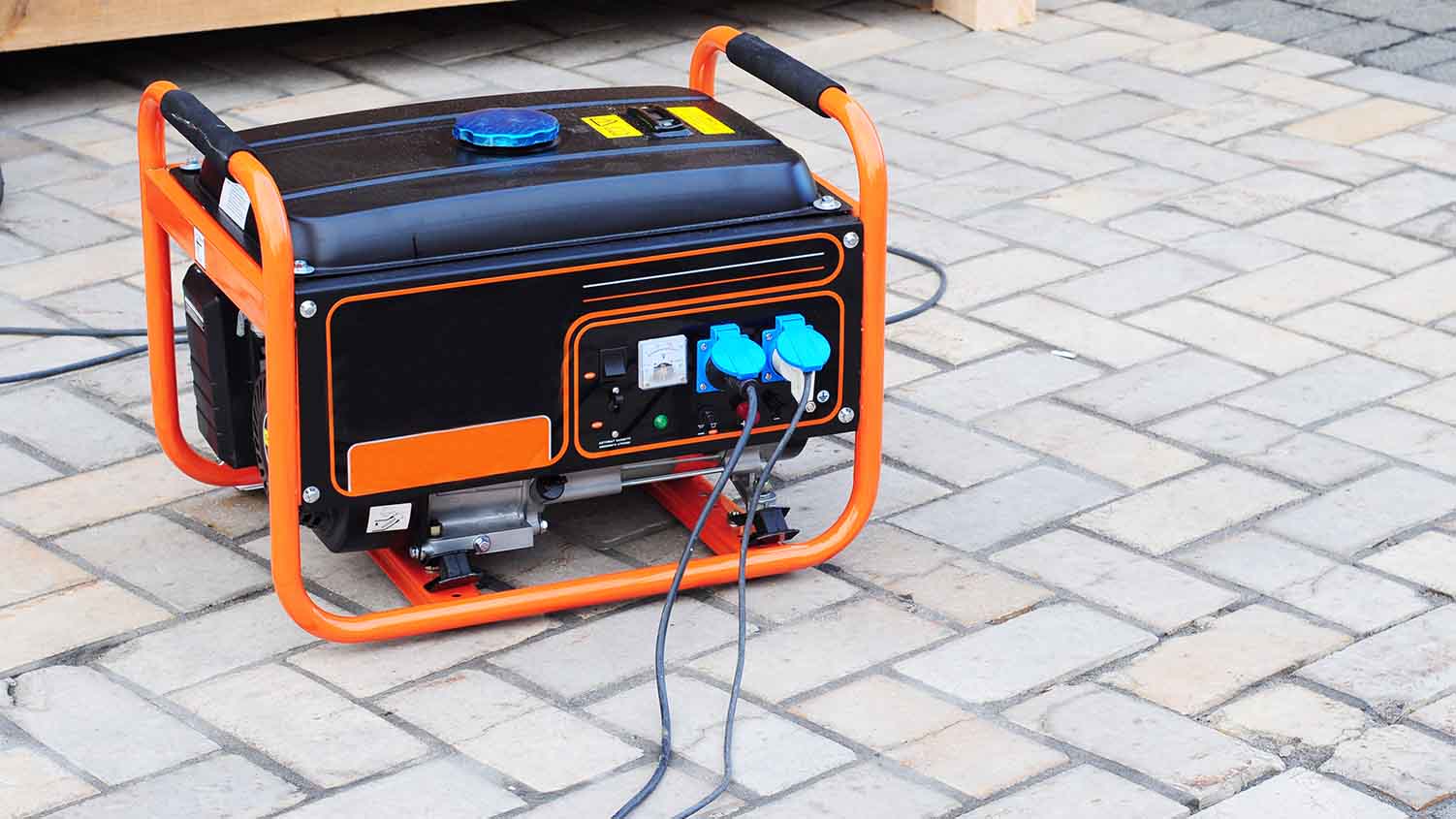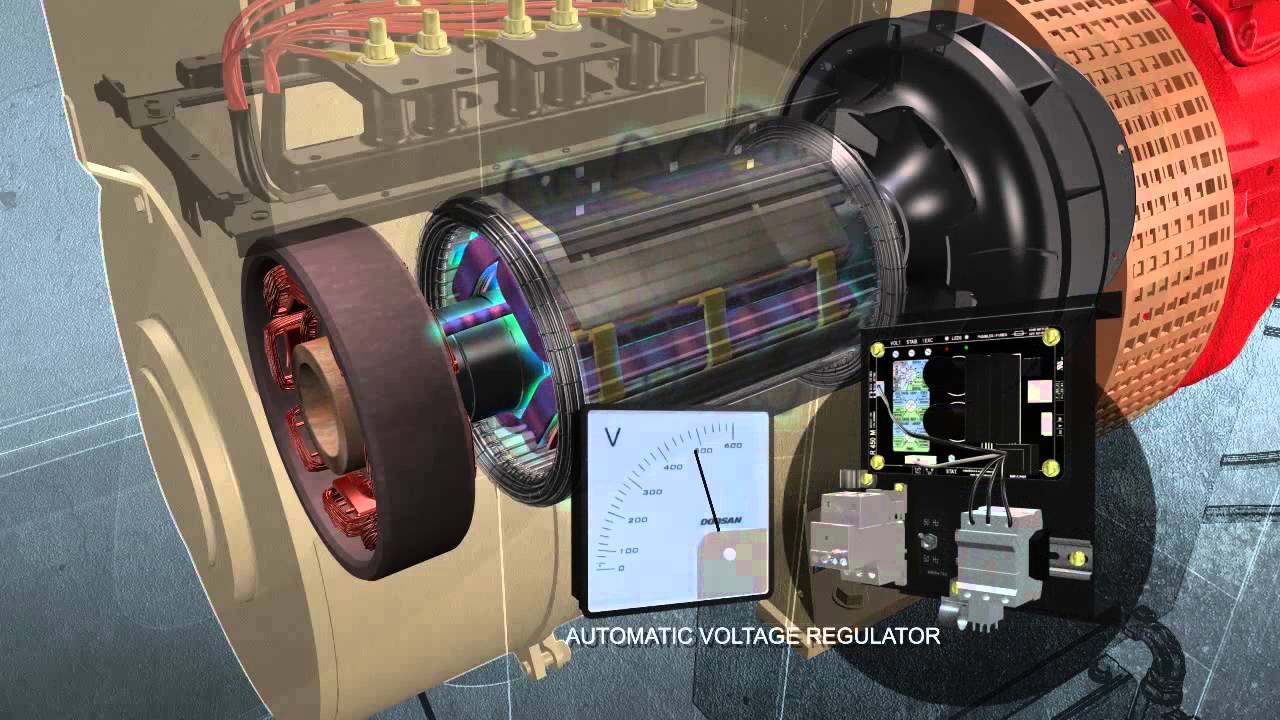Melvin is an expert for portable products.The site is for sharing everything about portable products for online buyers.
A generator is a machine that converts mechanical energy into electrical energy. The portable generator is powered by an engine and has a alternator that produces electricity. Most portable generators run on gasoline, but some run on diesel or propane.
A portable generator is a great way to have power when you need it, whether you’re camping or dealing with a power outage. But how does a portable generator work?
Basically, a portable generator is a small engine that runs on either gasoline or diesel.
The engine powers an alternator, which in turn produces electricity. That electricity is then sent through cords to whatever devices you need to power.
Of course, there are many different types and sizes of portable generators, so they can vary in terms of how much power they produce and how long they can run for.
But the basic principle is the same: the engine produces electricity, which is then used to power your devices.

Credit: www.zoro.com
How Do You Hook Up a Portable Generator to Your House?
If you live in an area that is prone to power outages, or if you are planning on going camping in a remote location, then it is a good idea to invest in a portable generator. Portable generators can be used to provide electricity for lights, appliances and other devices in your home, and they can also be used to charge batteries or run small electronic devices.
There are a few different ways that you can hook up a portable generator to your house.
The most common method is to use extension cords. You will need to purchase extension cords that are rated for the wattage of your generator, and you will need to have enough length to reach from the generator to the outlets that you want to use. If you are using the generator for backup power, then you will also need to install a transfer switch.
This will allow you connect the generator directly into your electrical panel so that it can provide power to your home in the event of a power outage.
Another option for powering items in your home with a portable generator is to use a inverter. Inverters convert DC power from the generator into AC power that can be used by most electronics.
You can plug small devices directly into the inverter, or you can wire it into your electrical panel just like a transfer switch.
No matter what method you choose for hooking up your portable generator, always make sure that it is properly ventilated. Generators produce carbon monoxide gas when they are running, so it is important not to use them indoors or in enclosed spaces where this gas could build up and become dangerous.
Can I Use a Portable Generator to Power My House?
A portable generator can be a great way to provide power to your home in the event of a power outage. However, it is important to note that portable generators should never be used indoors, as they produce harmful carbon monoxide gas. Additionally, you’ll need to make sure that your generator is properly grounded and connected to an outlet with a circuit breaker in order to avoid damaging your home’s electrical system.
Finally, be sure to keep plenty of fuel on hand for your generator – running out of gas is one of the most common reasons why portable generators fail to work during a power outage.
How Do You Use a Portable Generator in a Power Outage?
If you live in an area that is prone to power outages, a portable generator can be a lifesaver. But how do you use one safely and effectively? Here are some tips:
1. Choose the right generator for your needs. There are many different sizes and types of generators on the market, so make sure to choose one that will meet your power needs.
2. Place the generator outside.
Generators produce carbon monoxide (CO) gas, so it’s important to place them outdoors where the exhaust won’t build up and pose a danger to you and your family.
3. Connect appliances and devices carefully. Follow the manufacturer’s instructions for connecting appliances and devices to your generator.
Be sure not to overload the generator by plugging in too many items at once. And never operate any appliance or device inside that is not designed for indoor use with a portable generator.
4. Keep children and pets away from the generator while it’s running.
The CO gas produced by generators can be deadly, so make sure children and pets stay well away while it’s running – even if it’s placed outdoors.
How Does a Generator Get Power to the House?
Most generators are powered by either gasoline or diesel. The engine turns a generator, which in turn produces electricity. That electricity is then sent through wires to either an electrical panel or a transfer switch.
The electrical panel distributes the power to different circuits throughout the house; the transfer switch transfers power from the utility company to the generator during a power outage.
Doosan Portable Power How A Generator Works
How Does a Generator Work Simple
How Does a Generator Work Simply
A generator is a machine that converts mechanical energy into electrical energy. The principle of operation is based on the fact that when a conductor, such as a copper wire, is moved through a magnetic field, an electrical current is induced in the conductor.
When the generator’s engine runs, it turns the armature, or rotor. The armature has coils of copper wire wrapped around iron cores. The North and South poles of large magnets are mounted on either side of the armature.
As the armature turns, the coils move through the magnetic field and an electric current is induced in them. This current flows through slip rings and brushes to external wires where it can be used to power equipment or sent back into the grid.
How Does a Generator Work Without Electricity
When the power goes out, a generator can keep your home or business running. But how does a generator work without electricity?
A generator is powered by an internal combustion engine.
The engine runs on either gasoline or diesel and turns a series of magnets around coils of wire to create an electric current. That current is then sent through electrical circuits to provide power to lights, appliances, and other equipment.
During a power outage, you’ll need to start the engine manually (usually with a pull cord) or by using a battery-operated starter.
Once the engine is running, the generator will provide power as long as it has fuel. Be sure to keep the generator in a well-ventilated space and never run it indoors!
How Does a Portable Home Generator Work
A generator is a machine that converts mechanical energy into electrical energy. Generators are usually fueled by gasoline, propane, or diesel. Smaller generators can be powered by renewable sources such as solar panels or wind turbines.
How Does a Portable Home Generator Work?
Portable home generators are small and can be easily moved from one location to another. They typically have wheels so they can be transported over rough terrain.
Some models even come with built-in handles for easy lifting.
Most portable home generators run on gasoline or propane. These fuel sources are readily available and relatively inexpensive.
However, they can be dangerous if not used correctly. That’s why it’s important to read the manufacturer’s instructions carefully before operating your generator.
When the power goes out, your first instinct may be to start up your portable generator right away.
But it’s important to let the engine cool down before adding fuel. Once the engine is cool, you can add fuel and turn on the switch. The generator will begin producing electricity immediately.
If you need to use your portable home generator for an extended period of time, it’s important to keep an eye on the fuel level and refuel as needed. It’s also a good idea to run the generator for a few minutes each week to keep it in good working condition.
How to Use a Generator During a Power Outage
If you live in an area that is prone to power outages, then you know how frustrating and inconvenient they can be. One way to ease the frustration is to invest in a generator. A generator can provide you with the power you need to keep your lights on and your refrigerator running until the power comes back on.
Here are a few tips on how to use a generator during a power outage:
-Before using your generator, be sure to read the manufacturer’s instructions. This will ensure that you are using it correctly and safely.
-To avoid overloading your generator, plug in only essential appliances and devices. If possible, connect them directly into the outlets on the generator rather than using extension cords.
-Be sure to keep your generator well ventilated while it is running.
The exhaust fumes from generators can be deadly if inhaled, so never operate one indoors or in an enclosed space such as a garage.
-Never refuel your generator while it is running. Wait until it has cooled down completely before adding more fuel.
Conclusion
In a portable generator, the engine is connected to an alternator, which in turn produces electricity. The engine may be powered by gasoline, diesel, natural gas, propane or other fuel. Portable generators are often used in emergency situations when commercial power is unavailable.

Melvin is an expert for portable products.The site is for sharing everything about portable products for online buyers.

